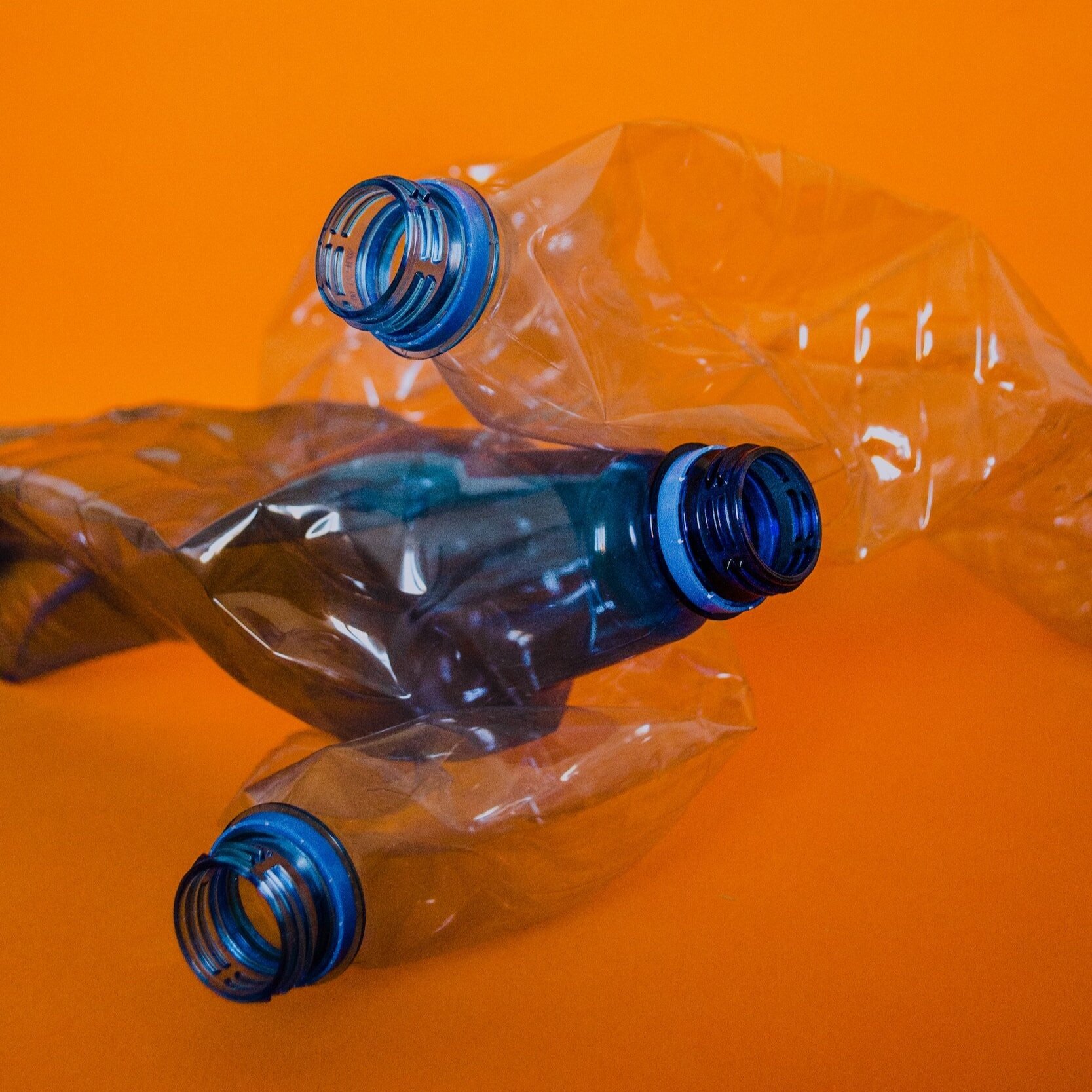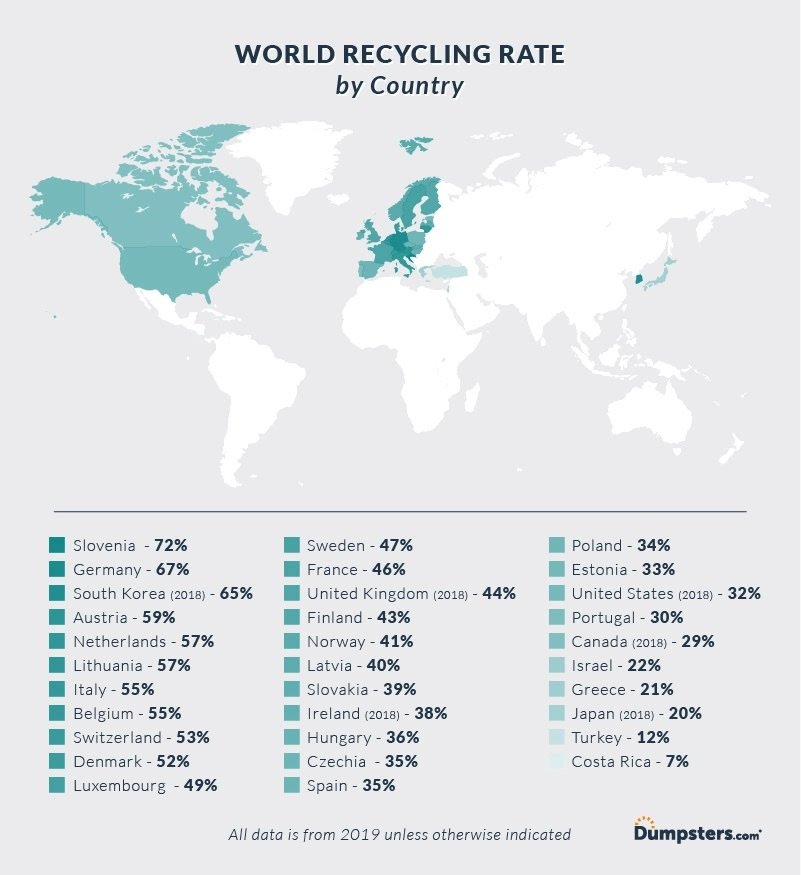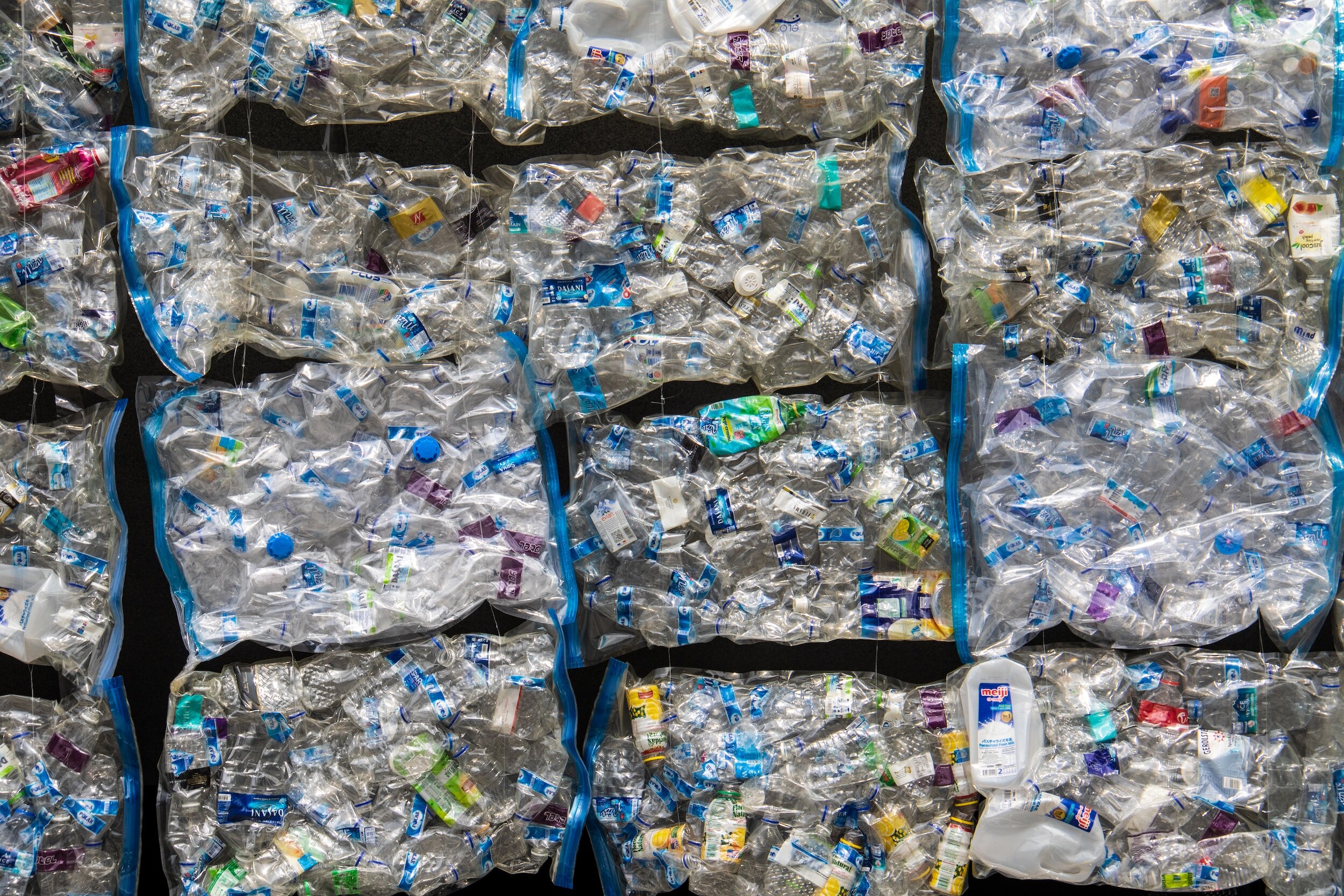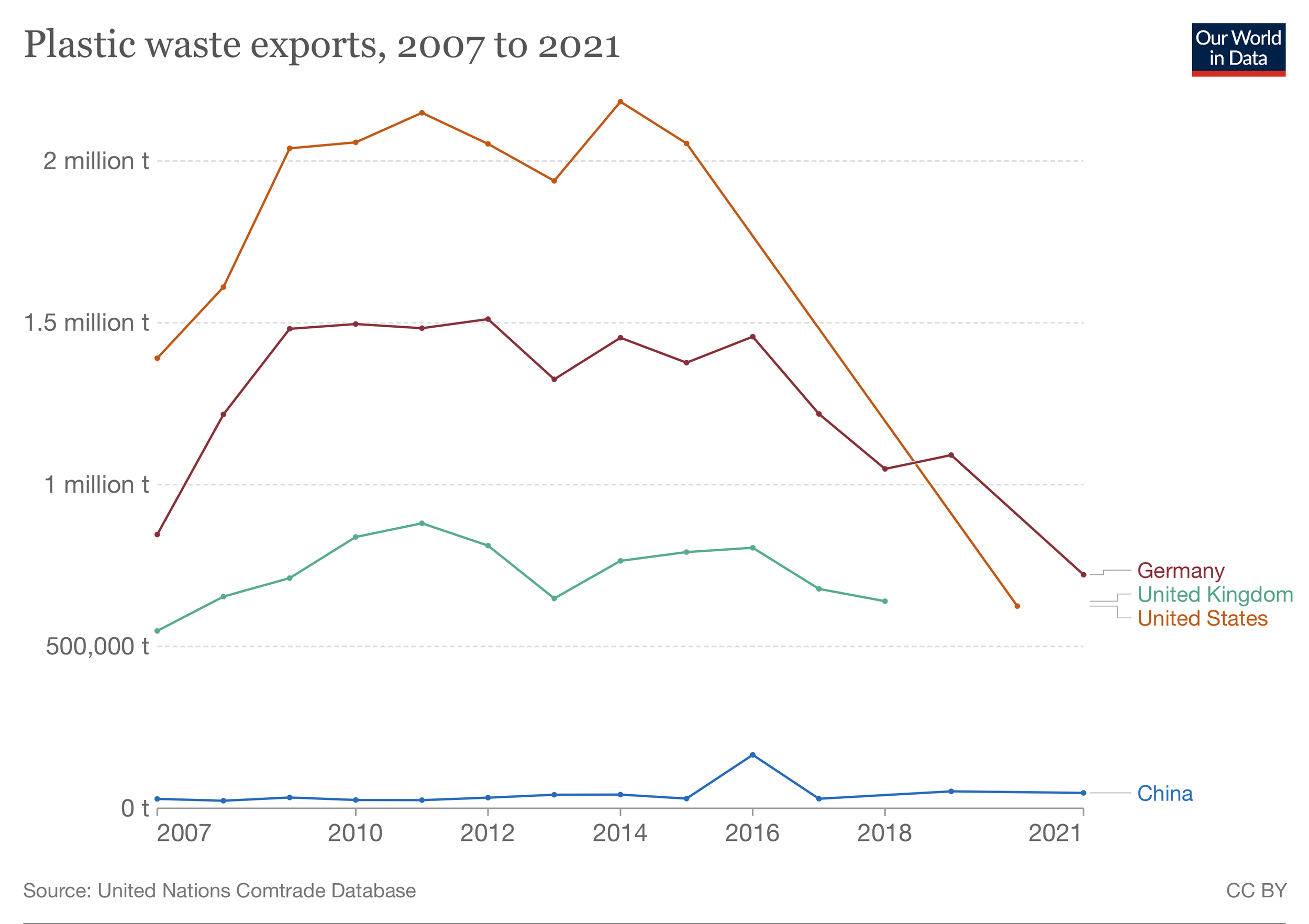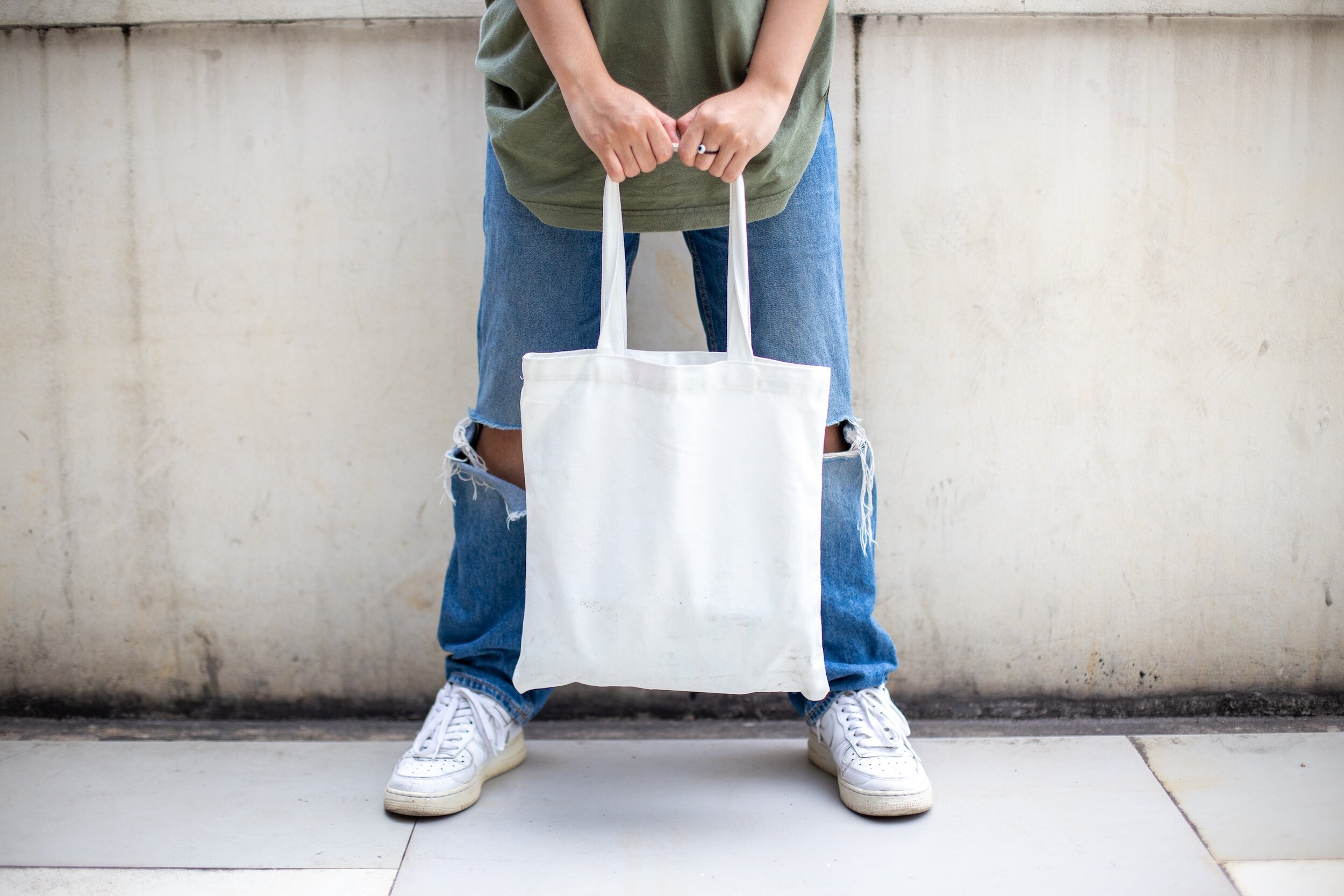The facts.
-
Today only 25% of US waste is actually recycled (don’t assume that everything collected curbside is actually recycled)
-
In 2017, the average American generated 4.51lbs of garbage per day, up from 2.68 lbs in 1960
-
A 2021 survey showed that 95% of Americans report that they recycle. Yet, in reality 34% recycle ‘frequently’ while 25% (62 million Americans), recycle ‘some of the time’, at best.
-
Less than 50% say they know the basics of recycling. For example, how boxes should be cleaned out and broken down for pick-up (49%) or where to drop off recycling if they needed to (46%).
>
“Every hour, 2.5 million plastic bottles are thrown away in the U.S. Plastic bottles take upwards of 450 years to degrade.”
The big picture.
Recycling is a fraught topic. Our efforts in the United States run the gamut, from those who meticulously sort each and every recyclable, to those who scoff, claiming everything just goes to the landfill anyway. What we do know is that natural resources are getting scarcer, landfills are overflowing, our planet is in peril, and our consumption and packaging waste is out of control. So, in this post we’re going to give you the lowdown on where we are as a country in terms of recycling, investigate how we can make the process better, and give you some helpful recycling tips!
Compared to the rest of the world, we are not doing well.
How does recycling impact the planet?
While this is a huge topic, let’s break it down. Of course, from an environmental perspective, we would ideally want to recycle as much as possible. But in a resource constrained world, it makes sense to focus on materials which have the highest impact – metals and glass can be recycled infinitely and have the biggest impact on Greenhouse Gases (GHG). In practice, however, we are primarily recycling paper and cardboard, as the chart below from the EPA demonstrates.
2018 EPA breakdown of recycling in the US
-
Paper can be recycled five to seven times before it’s too degraded to be made into “new” paper
-
Plastic can only be recycled once or twice—and usually not into a food container
In contrast, take a look at the table below to see how much GHG it takes to manufacture the same items from new materials vs recycled materials. Pound for pound it makes sense to recycle glass and metal, not only for the GHG emission savings, but for the bonus that they can be recycled indefinitely.
Recycling’s impact on other countries.
The US ships much of its recyclables overseas. Prior to 2016, China accepted over 16 million tonnes of paper, plastic and metal for use in its manufacturing industry; however, over 30% of this was unusable due to contamination.
As a result, China increased its standards for what it would accept in an attempt to curb this problem. SInce that time, we are exporting less garbage (see plastic numbers below)
-
However, now our exported garbage is being sent to countries with lax labor and environmental laws, such as Cambodia, Bangladesh and Ethiopia.
-
In these countries, its residents face health problems such as contaminated water, crop death and respiratory illness from incineration of these plastics.
Does recycling impact us personally?
Recycling has become part of our culture. Approximately, 78% of Americans who do not always recycle confess they feel guilty about this sub-par behavior. Among these folks who feel remorse, almost half (49%) say they feel this way because they know their waste is likely to end up in a landfill.
-
1 in 4 (27%) report that it is because they let the inconvenience of recycling overshadow doing something for the greater good
-
Nearly one in five (18%) – or 44 million Americans – admit that learning someone does not recycle is a dating turn-off
-
88% of Americans who recycle frequently feel better about doing their part to help the environment
-
98% of parents intend to teach their children about recycling
What does this all mean and what can we do?
As a nation, we have a long way to go. Recycling success varies significantly from state to state, most states recycle paper and cardboard but there are significant variations in recycling plastic, metal and glass.
In general, states which have good curbside pickup infrastructure, good data collection and a bottle return deposit systems have the best results.
See how your state stacks up here.
Test your knowledge!
Take this interactive quiz!
Here are some important recycling tips!
-
Minimize contamination. Avoid mixing organic material with recycling (for example pizza boxes with oil)
-
No plastic bags/wraps in the recycling as they jam the equipment making it more expensive
-
If in doubt, throw it out – do not WISH-cycle
-
Find out if your state has a bottle deposit return system – this is a small deposit on top of the price of a beverage, which is repaid when the empty can or bottle is returned for recycling
-
Take some time to go to your state’s recycling website and learn how to responsibly dispose of your common purchases
-
Aim to be consistent
-
Plastic
-
with #1 or #2 on the bottom are recyclable
-
with #3 to #7 are more variable. Before throwing these plastics in the recycling bin, confirm that your recycling hauler will accept them (when in doubt, throw them out)
-
-
Paper / Cardboard
-
Recycle all clean paper and all clean and flattened cardboard boxes removing all tape and plastic wrap.
-
-
Glass
-
Many places are not recycling glass anymore so refer to your county’s policy
-
If you can recycle glass in your community, never put glass drinkware or window glass in your bin – only recycle glass bottles/jars
-
-
Aluminum
-
Recycle cans as much as possible
-
Recycling 1 ton of aluminum results in 3x GHG improvement compared to recycling 1 ton of cardboard
-
The Choices.
Life-centric
If your focus is on being kind to living things, keep in mind that increasing recycling increases employment in the USA. Job creation is one of the more positive impact of our recycling habits.
In 2020 recycling in the USA supported 757,000 American jobs and it is estimated that increased recycling will add another 370,000 full time jobs. Yet there are risks to human workers, primarily during the sorting process. It is estimated that 45% of injuries for material recovery workers is due to needlesticks.
Inform yourself and aim to be consistent in recycling as much as possible.
Recycling is a human rights issue because of the negative impact of our waste on other’s lives.
Earth-centric
If your focus is on the earth and environment, in a resource constrained world, it makes sense to focus on materials which have the highest impact – metals and glass can be recycled infinitely and have the biggest impact on Greenhouse Gases (GHG).
Avoid single use plastic as much as possible.
Think about waste reduction in addition to recycling, avoid heavily packaged items.
Holistic
If you are considering both a life and environmental focus, reducing consumption is an important first step. It is always better to reduce consumption rather than to recycle.
Buy recycled products as much as possible – here is a list of brands who specialize in this.
Think reduce and reuse before recycle.
If your state’s recycling practices are subpar, consider sending letters to state leaders to voice your concern.
Companies such as Ridwell and Rabbit Recycling maybe options depending on where you live.
Additional resources.
Take a deeper dive.
Products we recommend.
Where you spend your money has an impact. There are many companies whose products are made from recycled materials, we’ve compiled a list for you!

